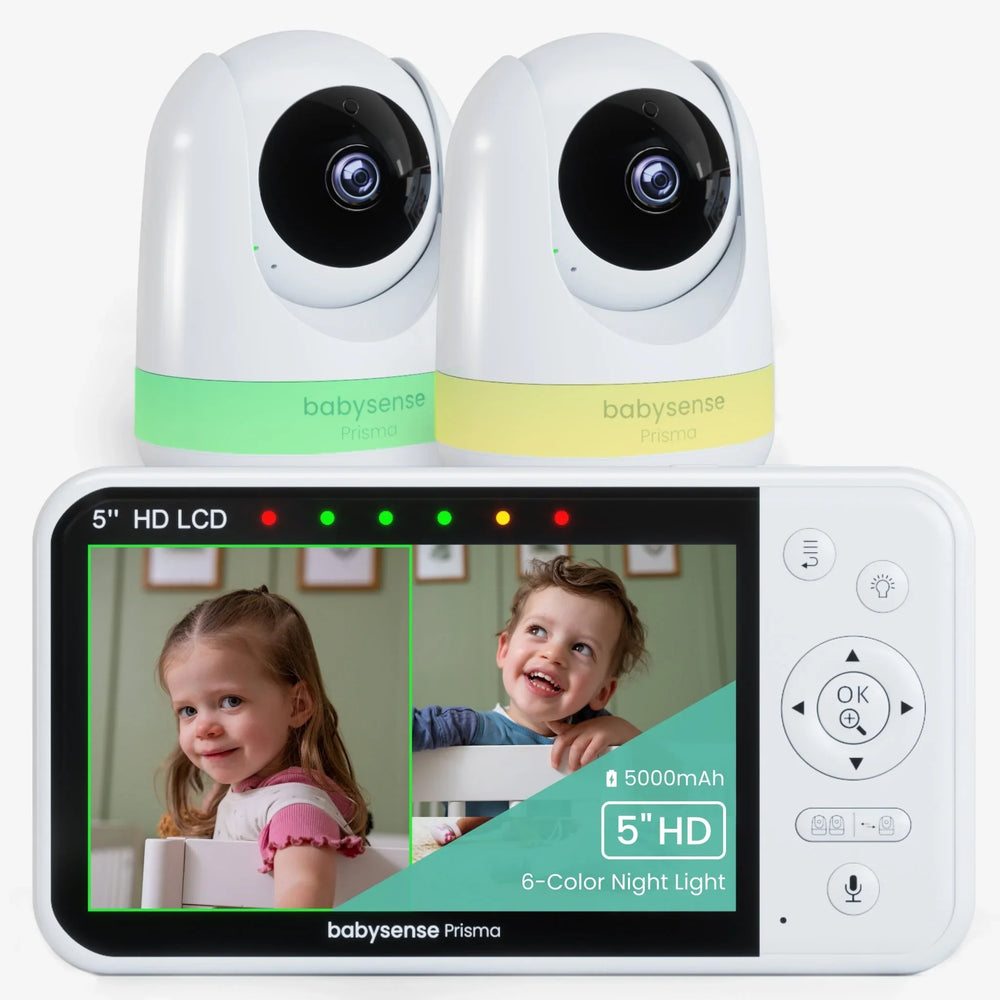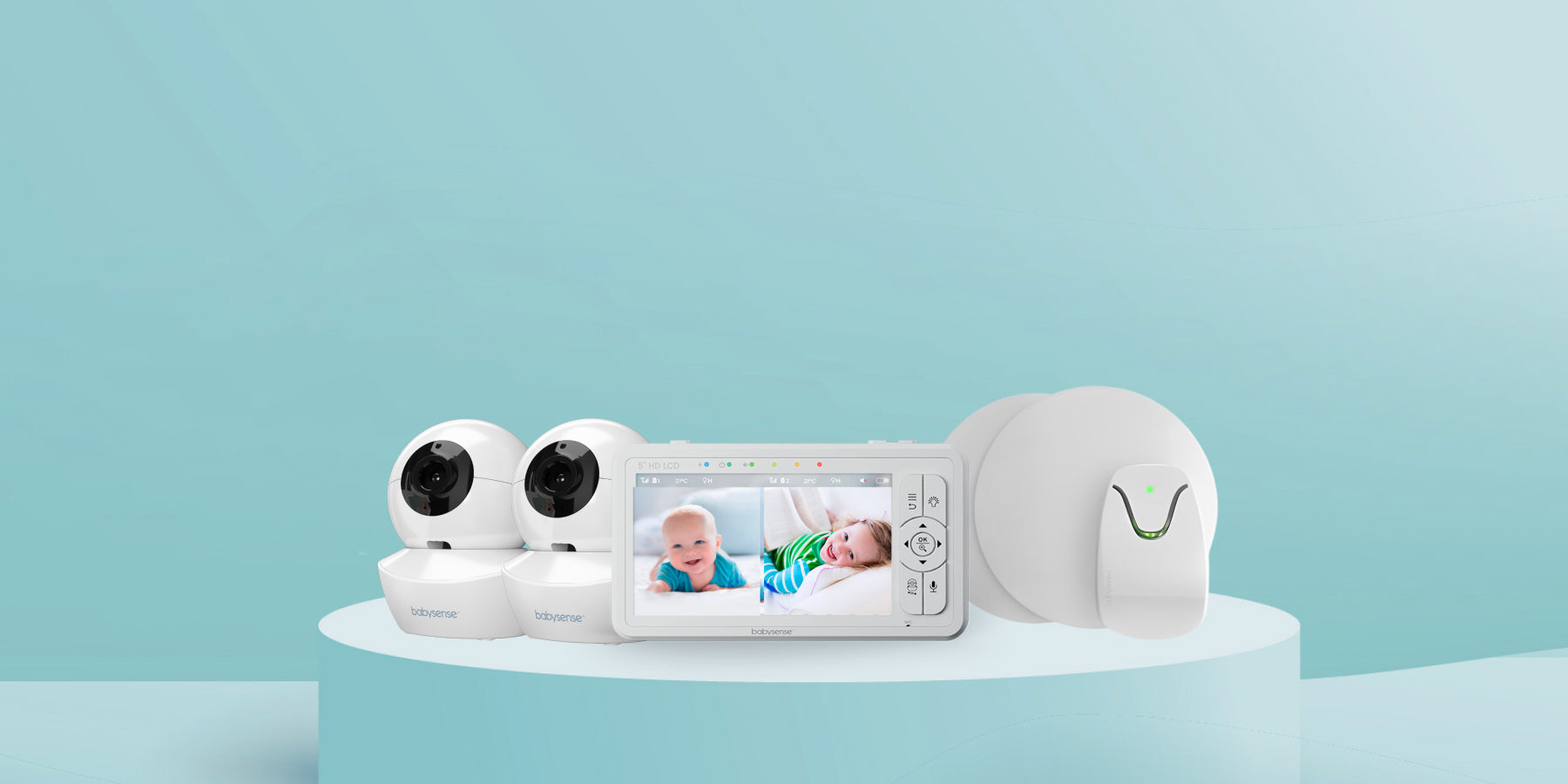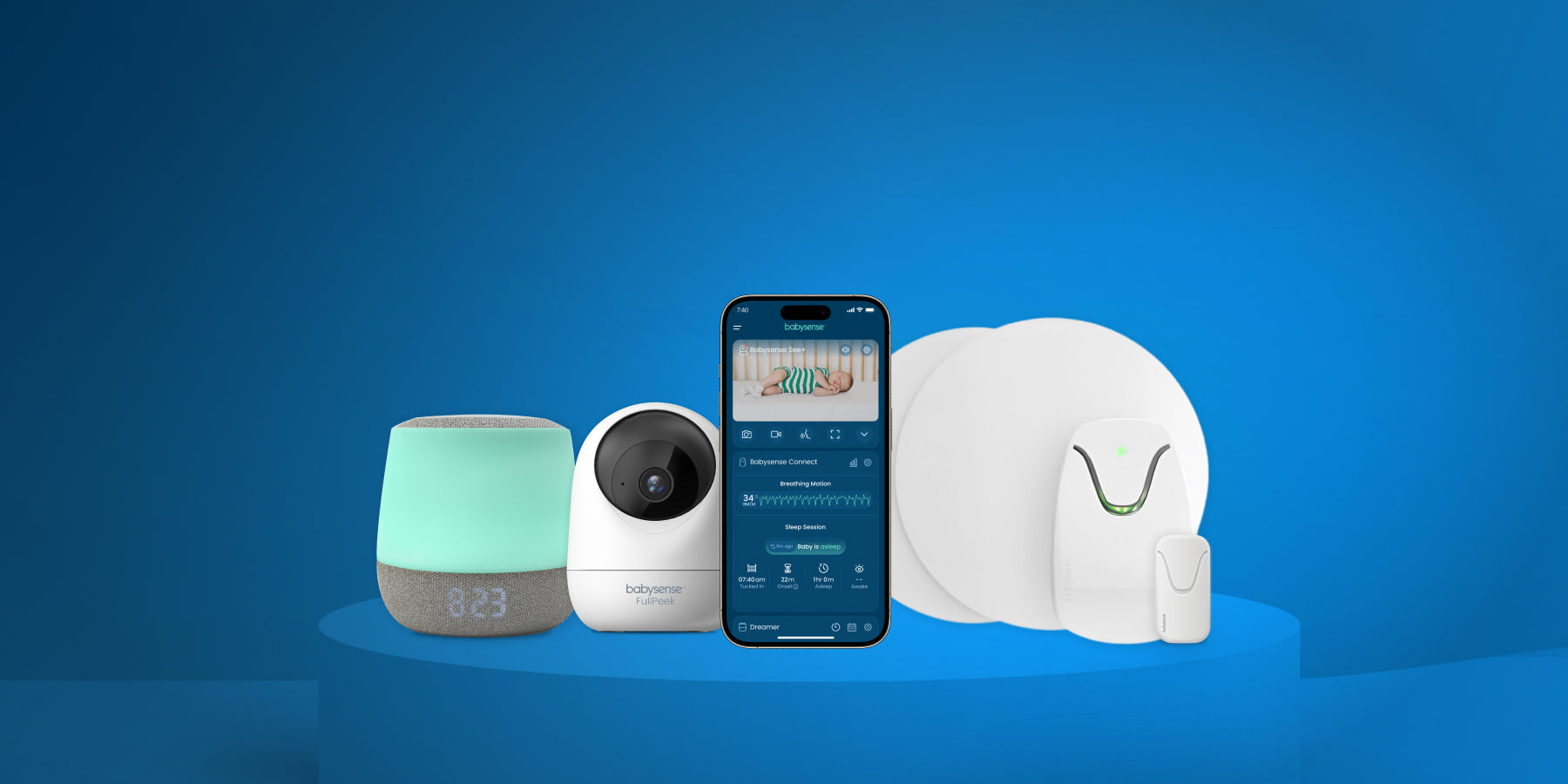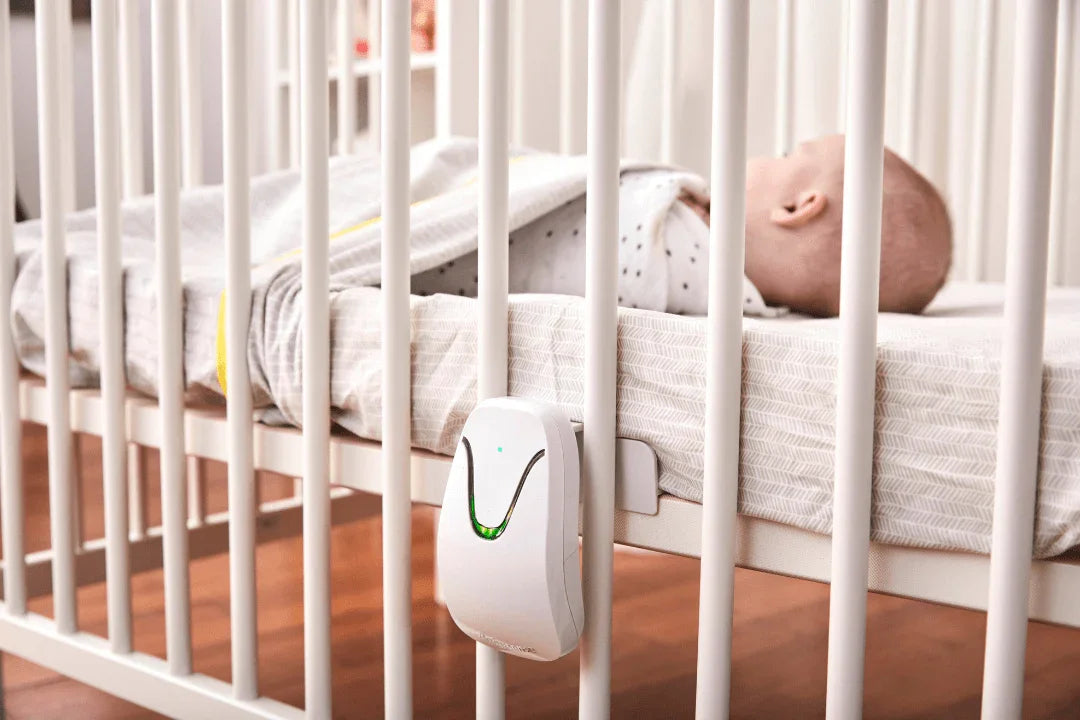If you are asking how do video baby monitors work, here is the short version. A nursery camera captures audio and video, encrypts the data, and sends it to a parent unit by 2.4 GHz radio or Wi-Fi. The receiver decodes the stream so you can see and hear your baby, even in low light.
What is a video baby monitor
Video monitors pair a nursery camera with a handheld screen or phone app. Many families choose a non Wi-Fi unit for a private, closed connection at home. If you prefer a simple, secure setup, the Babysense Prisma non Wi-Fi monitor is designed for clear video, strong range, and split screen viewing.
How the signal flows
1) Capture
Camera sensor records video and a microphone captures audio. Infrared LEDs support night vision.
2) Encode & encrypt
The camera converts sound and video to digital data and encrypts it for privacy.
3) Transmit
Data is sent over 2.4 GHz radio (FHSS) or through your router if the monitor uses Wi-Fi.
4) Receive & display
The parent unit or app decrypts the feed and shows it live, with features like VOX sound activation.
RF vs Wi-Fi vs hybrid
| Feature | RF (non Wi-Fi) | Wi-Fi | Hybrid |
|---|---|---|---|
| Range | ~900–1000 ft line of sight | Unlimited with internet | Home range plus app |
| Internet needed | No | Yes | Optional |
| Privacy | Closed circuit with FHSS | Depends on network security | Dual options |
| Setup | Plug and play | App, account, network | Moderate |
| Typical fees | None | Cloud storage may apply | Optional |
Key parts explained
Camera
- 720p or 1080p resolution
- Wide field of view
- Infrared night vision
- PTZ for pan, tilt, zoom
Parent unit
- Split screen for two cameras
- Rechargeable battery
- VOX mode
Audio
- Two way talk
- Noise filtering
- Lullabies or white noise

Security and privacy
Good habits keep your feed private. RF units benefit from FHSS and pairing codes. Wi-Fi models need strong passwords, updates, and turning off remote access when unused.
Setup tips
- Mount 3–6 feet above the floor
- Keep cords 3+ feet from crib
- Test signal before mounting
Troubleshooting
Interference
- Move away from 2.4 GHz devices
- Try another channel
Night vision issues
- Clean lens
- Avoid reflective surfaces
FAQ
Can video baby monitors work without Wi-Fi?
Yes. RF monitors like the Prisma use a private 2.4 GHz link.
What range can I expect at home?
Line of sight up to ~1000 ft; indoors ~150–200 ft depending on walls.
Is FHSS important?
Yes, FHSS improves privacy and reduces interference.
How many cameras can I add?
Many units support 2+ cameras with split screen.
Where can I learn safe sleep setup?
See AAP safe sleep guidelines here.





